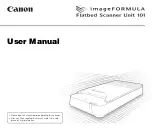
The NMT master sends a CAN message with the identifier 700h + node ID and RTR bit
(remote transmission request).
Table 32: NMT master request
CAN-ID
RTR
DLC
Data
700h + N
1
0
The safe multibeam scanner sends a response with the following content:
Table 33: Response of the safe multibeam scanner
CAN-ID
DLC
Data
700h + N
1
Byte1
Table 34: Byte 1 status byte
Bit
Meaning
7
Toggle bit, switches the value between two consecutive requests
6 … 0
NMT status
4 = Stopped
5 = Operational
127 = Pre-operational
4.5.1.8
LSS
The safe multibeam scanner supports the configuration with LSS by the CAN bus.
You can adjust the following parameters for the safe multibeam scanner via LSS:
•
General CAN parameters for the communication of the safe multibeam scanner
within the network
°
Node ID
°
Baud rate
4.5.1.9
Store / Restore
Store
The Store object enables the communication parameters to be transmitted into the
data memory (EEPROM) of the safe multibeam scanner. This makes the communication
parameters available even in the event of loss of power.
The safe multibeam scanner does not distinguish between parameter groups. The
string “save” must be sent as part of the data content.
Restore
The Restore object enables the saved communication parameters to be loaded from
the data memory (EEPROM) of the safe multibeam scanner.
The existing communication parameters in volatile memory are lost as a result of this.
The string “load” must be sent as part of the data content.
4.5.1.10
SDOs
SDO communication
SDOs are Service Data Objects. These objects contain a wide range of different data.
This also includes configuration data as well as input and output data. Unlike with PDO
communication, reception of each SDO is answered on protocol level, i.e. the receiving
device sends a confirmation.
The following protocols are supported in this CANopen PCS implementation:
PROJECT PLANNING
4
8025990/2021-03-03 | SICK
O P E R A T I N G I N S T R U C T I O N S | scanGrid2 CANopen
41
Subject to change without notice
















































